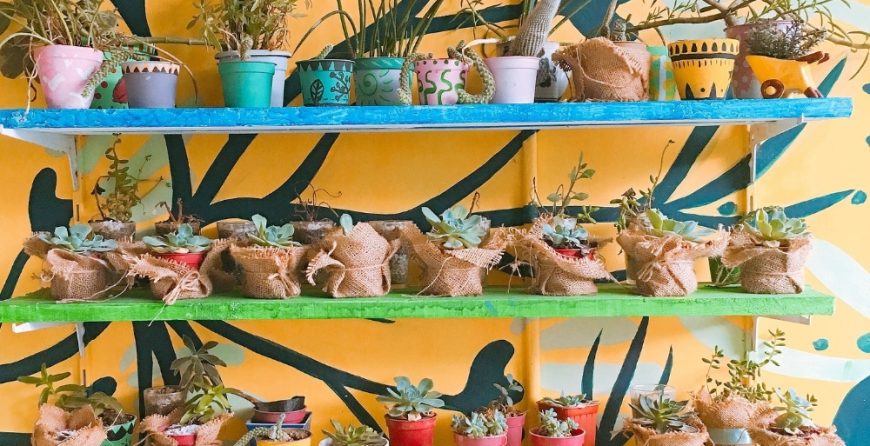Do you have little to no space at all but loves to garden? There is a way for you to continue gardening via container gardening. Learn more about it in this article.
Overflowing flowers in pots, tubs, and half barrels are a sight to see on your garden. But do you know that container gardening can also serve other purposes?
For those who would love to create their own home garden but has little to almost no space at all, container gardening is the answer.
Container gardening adds versatility to gardens whether it may be small or large. It creates a focal point on your garden or an addition to your interior design. In short, container gardening does not only allow you to grow your plants but also add some style to your home.
What is some basic information you should know about container gardening? Read on.
Container Size
Take note that it is easier to grow plants in a large container rather than a small one. This is because large containers hold up more soil and keep the moisture longer and can resist temperature change.
However, it is important for you to determine what kind of plant you want in each container. This helps you in deciding the size and depth of the container you should use.
Some plants need only a fair amount of soil while others need more. Other factors you should also consider include the size and shape of the plant’s roots and how fast it grows.
The maximum weight and size of your container will depend on the space you have, what will carry it, especially if you are going to move it from one place to another.
Container Drainage
Drainage holes are essential. It determines how long or fast your container can hold the water. Without this, stagnant water can be the cause of your plant’s death. Thus, the holes should not be too large or too small. If your containers have no holes, try drilling some.
Container Materials
Each type has its pros and cons:
Clay or Terracotta – Attractable but breakable and can be easily damaged by changing temperature.
Cast concrete – Long lasting with variety of sizes and styles. It can stand different weathers. But this is a heavy container, so if your thinking of moving your container from places, this is not for you.
Plastic and Fiber Glass – Lightweight, inexpensive, and has different shapes and sizes. Make sure to choose sturdy and flexible containers and avoid thin, stiff ones as they can easily break with cold and age.
Polyurethane Foam – Looks heavier but it is 90% lighter than terracotta and concrete containers. It can resist chipping and cracking and can stand both hot and cold temperature. If you are planning to place your plants outside, this is the choice for you.
Wood – Natural looking and is able to protect roots from temperature changes. It can be DIY. just make sure to use a natural rot-resistant such as cedar and locust. Take note not to use creosote as it is toxic to plants. This is also inexpensive by the way.
Metal – Strong but conducts heat that can expose plants’ roots to fluctuating temperatures.
Read more about the different types of plant container in our previous article.
How to prepare your container garden?
Containers become heavier once it is filled with soil. Thus, it is best to place it on a spot where you want it to stay before filling it with soil and planting it with seeds. However, do make sure to put these containers in a place where they can receive sufficient sunlight in the morning, while giving them shade from the sun on the hottest part of the day.
Plant Selection for Your Container Garden
Most vegetables, flowers, herbs, shrubs, and a small tree can grow in a container. Pick plants that fit the climate. You can combine different upright and streaming plants, edibles, and flowers for more colorful results. You can design your container garden either seasonal or permanently.
Read some tips about balcony container gardening here.
Vegetables and Herbs
Vegetable and herbs can be grown into individual containers but if your container is a little bit larger – you can combine two herbs or vegetables into one container – such as broccoli and cabbage.
Themed container garden is also something to try. You may plant a salad garden with lettuce, tomatoes, chive, and parsley or if you’re a pizza lover, you can plant basil, tomatoes, and peppers.
Container Care
Watering your container garden plants depends on the weather, how large the container is, and the plant size. Do not let your soil be too dry. For large containers, try applying mulch to help in retaining moist longer.
These type of garden needs regular feeding. You can fertilize by watering them with a diluted fish mixture, seaweed extracts, or a tea compost. You can also just spray these solutions to the leaves. Start by once every two weeks feeding then adjust the frequency depending on your plant’s progress. Make sure to keep an eye for pests to keep your container plants looking at its best.
Happy gardening!


